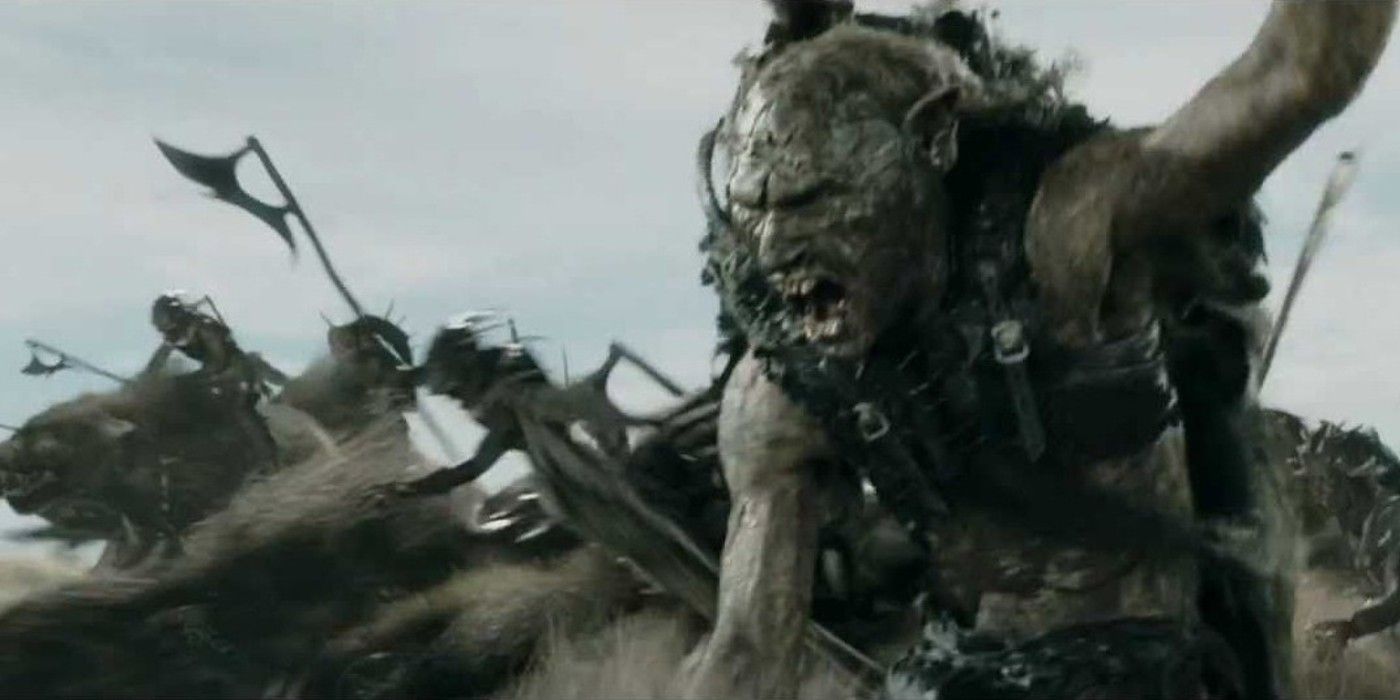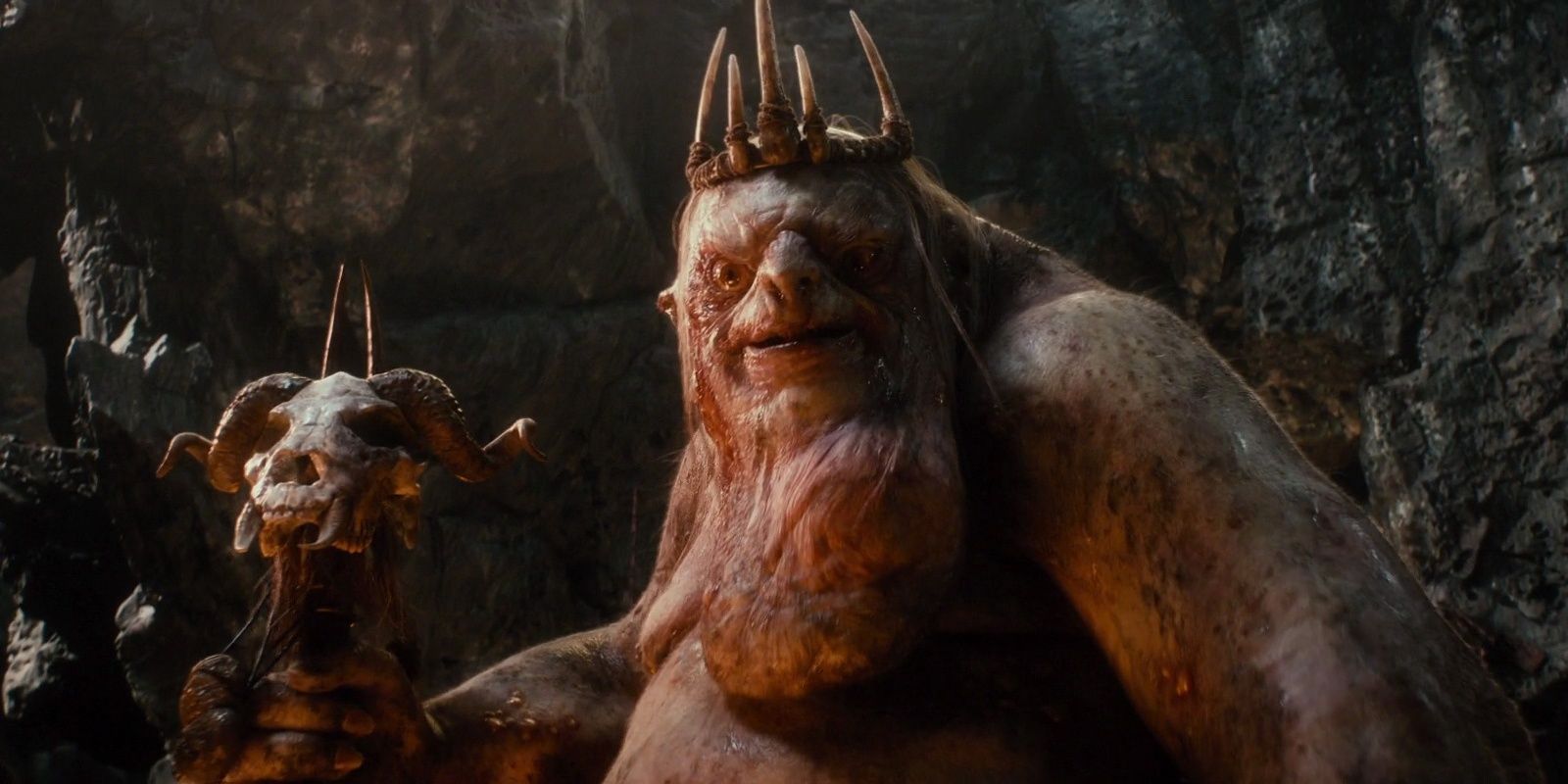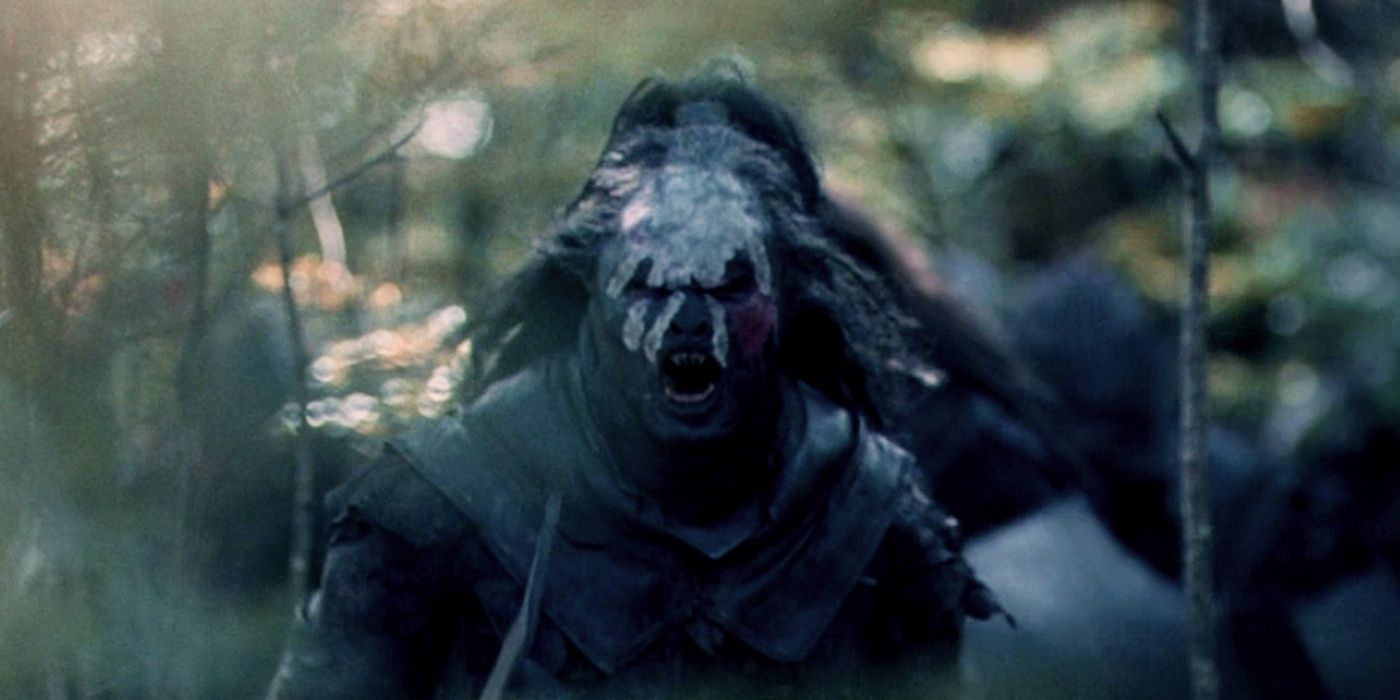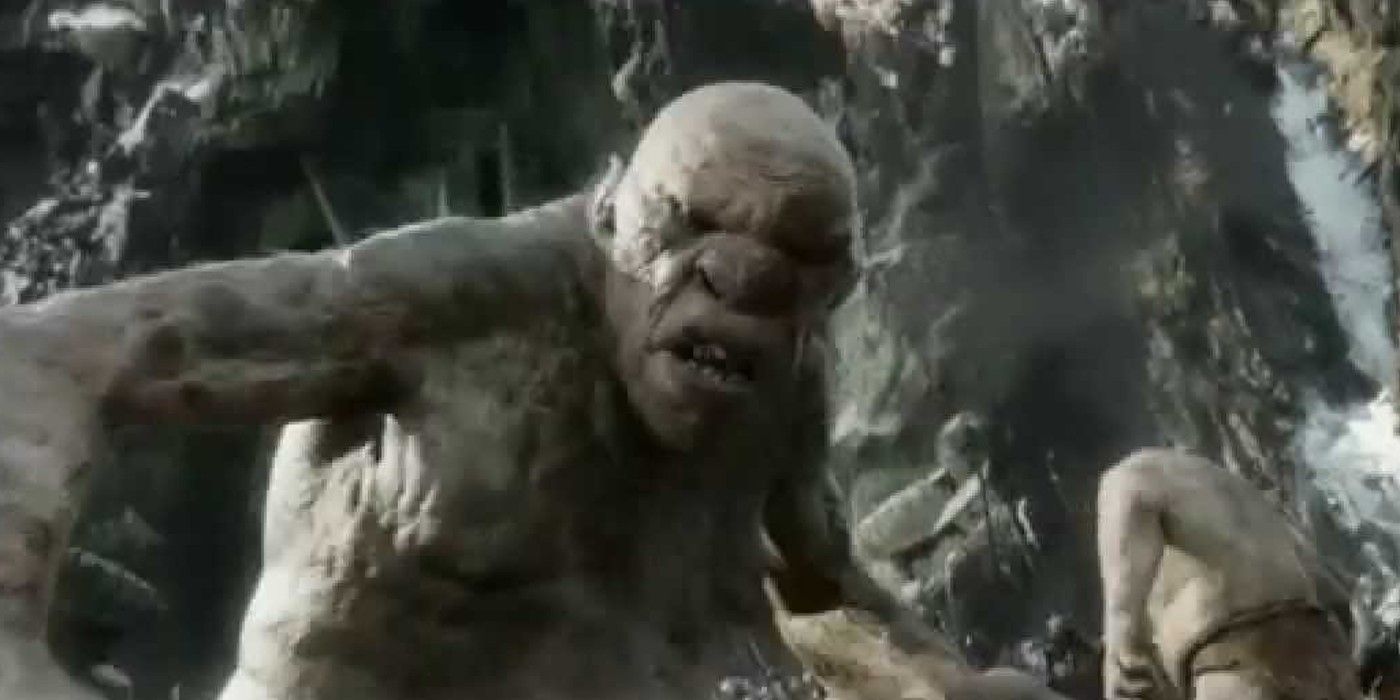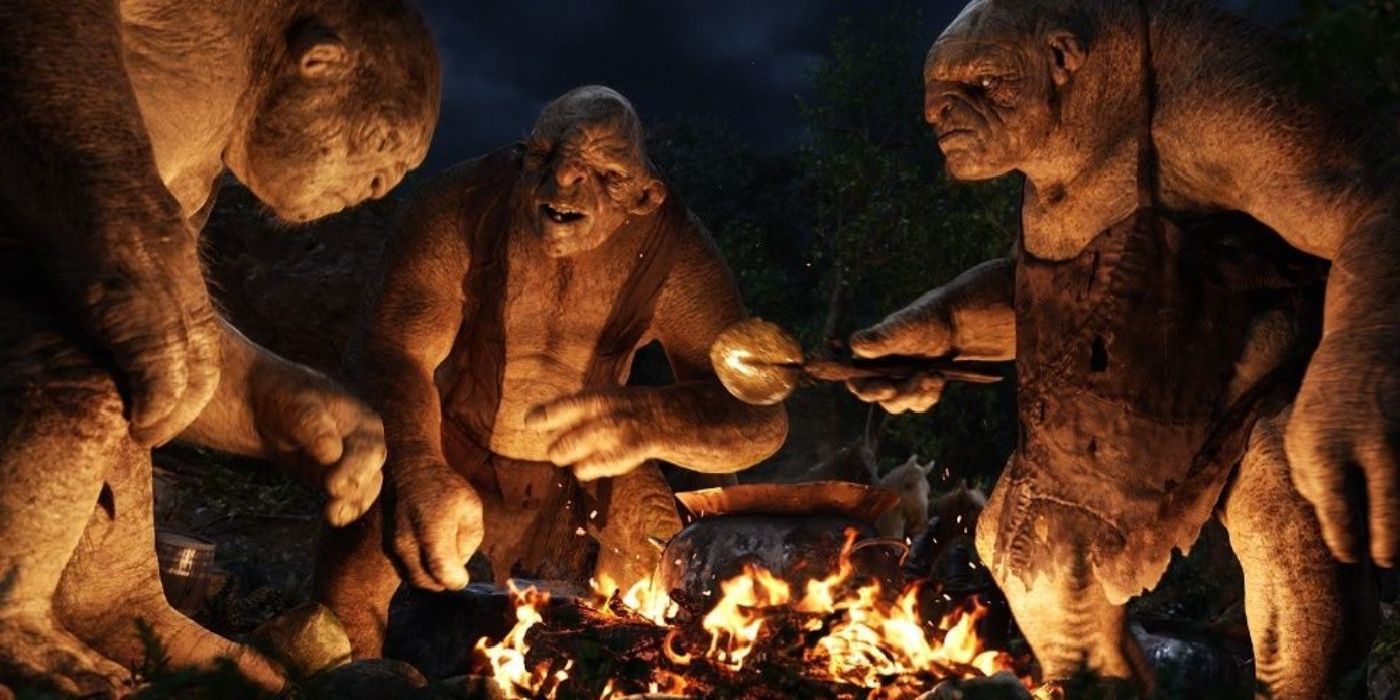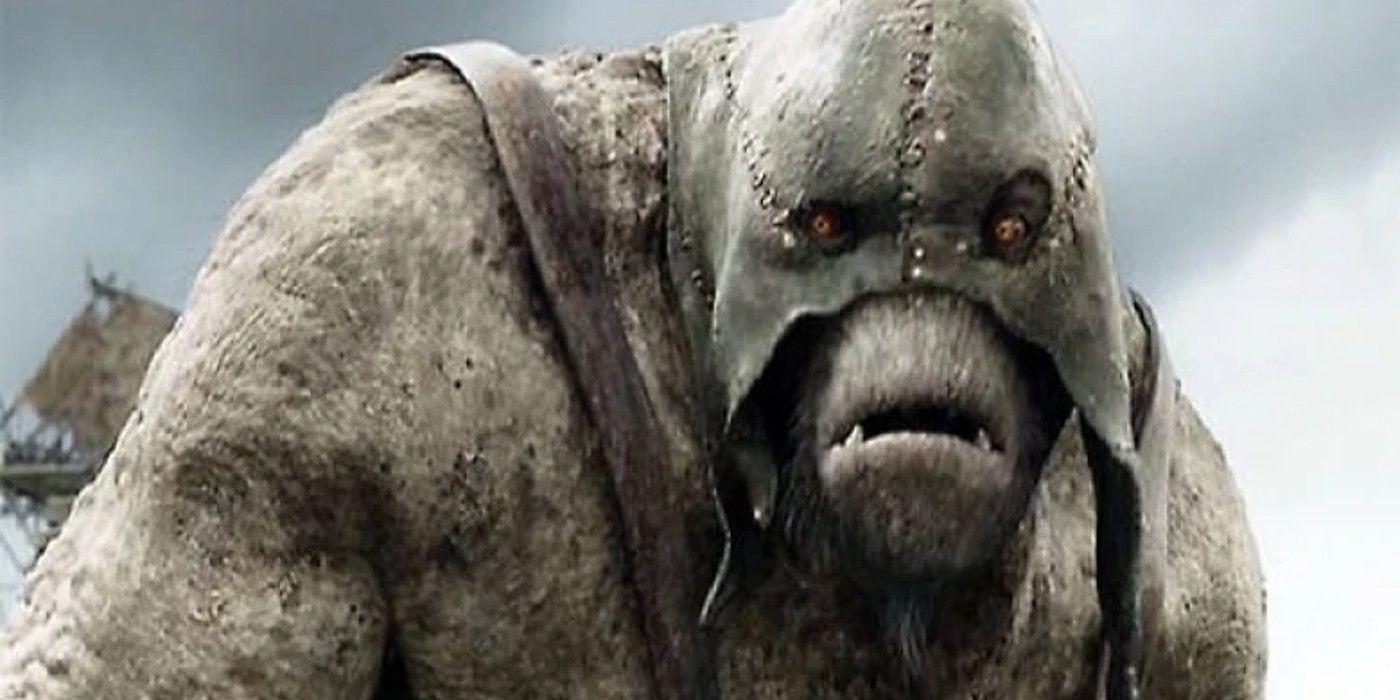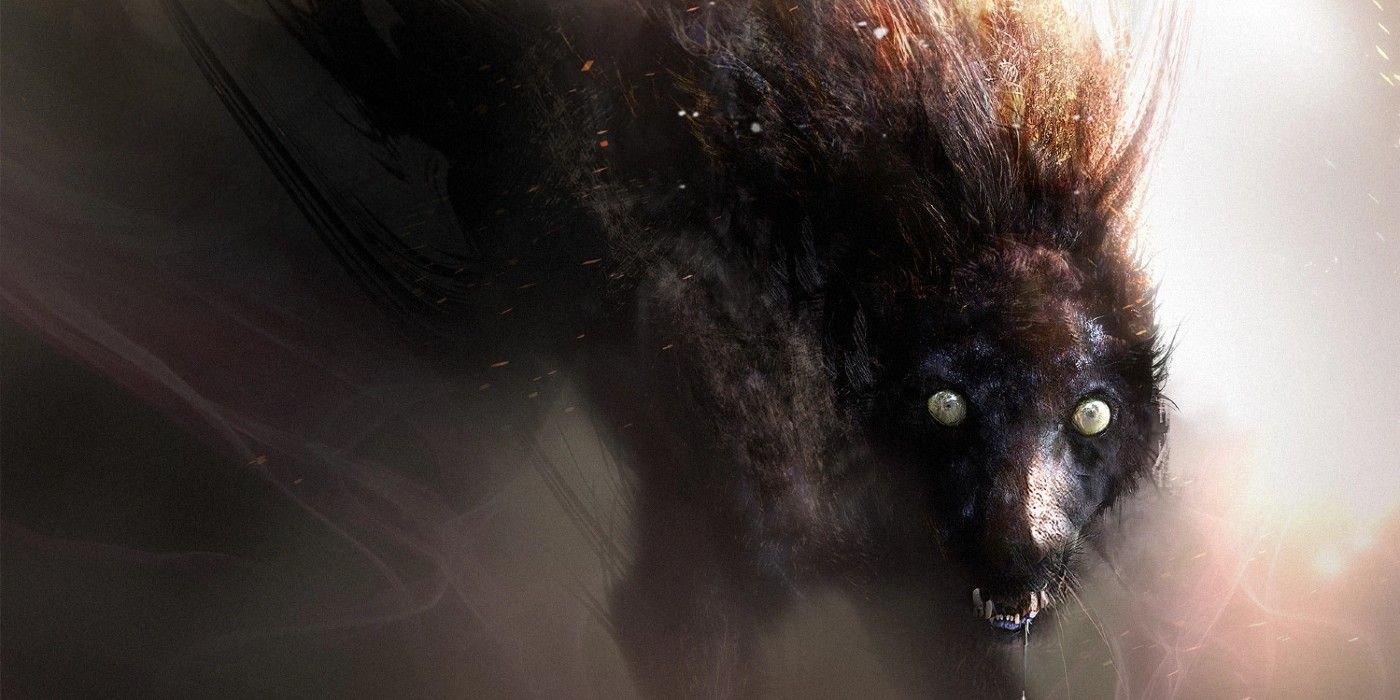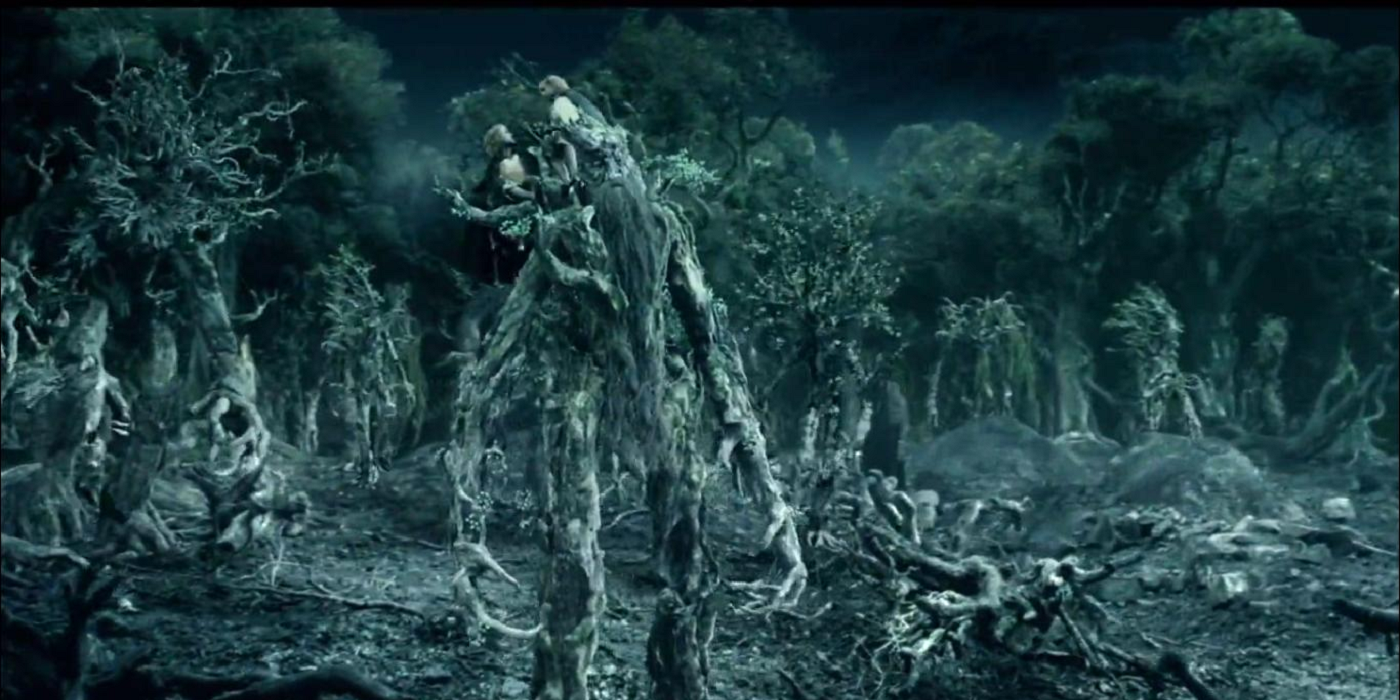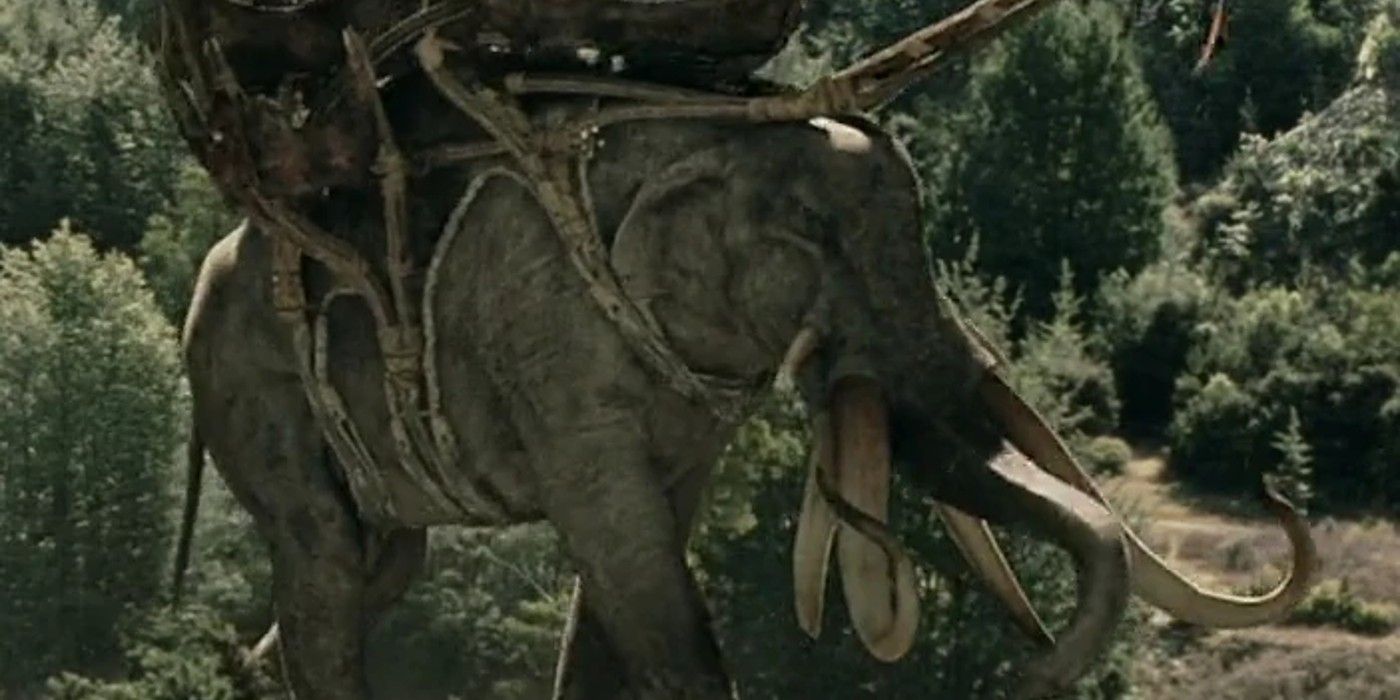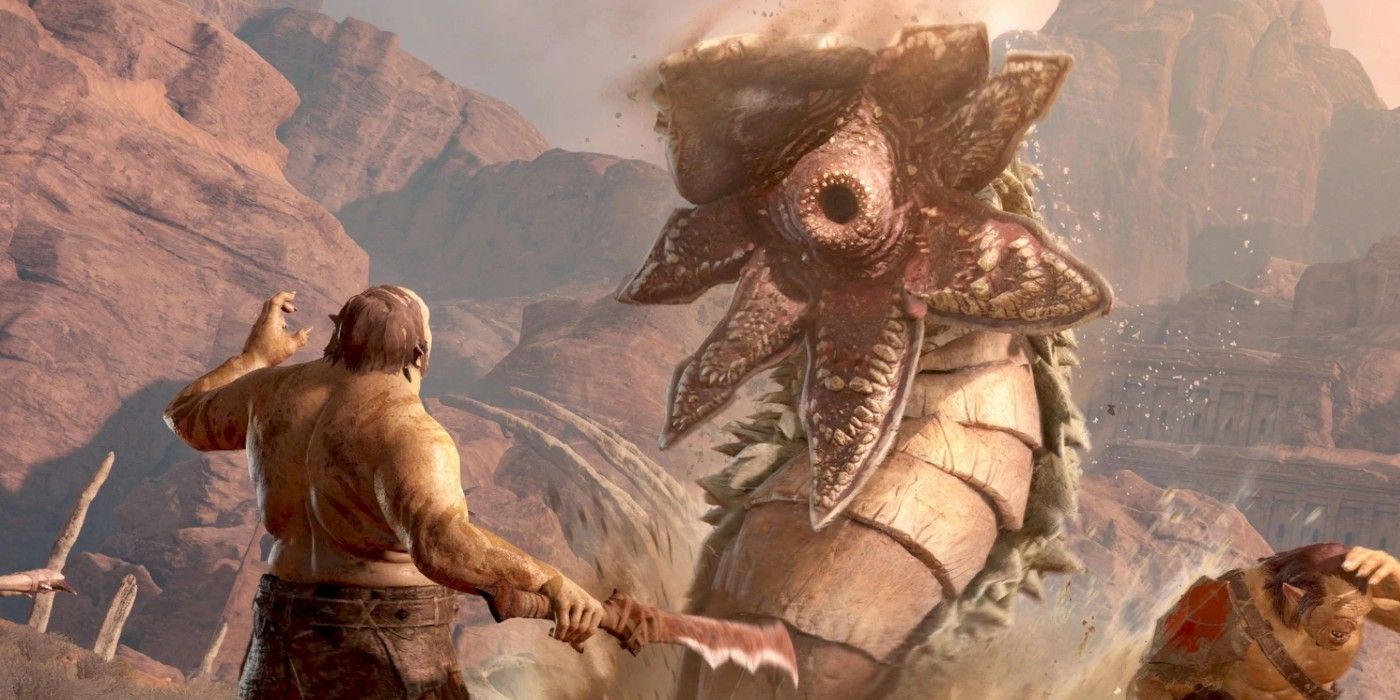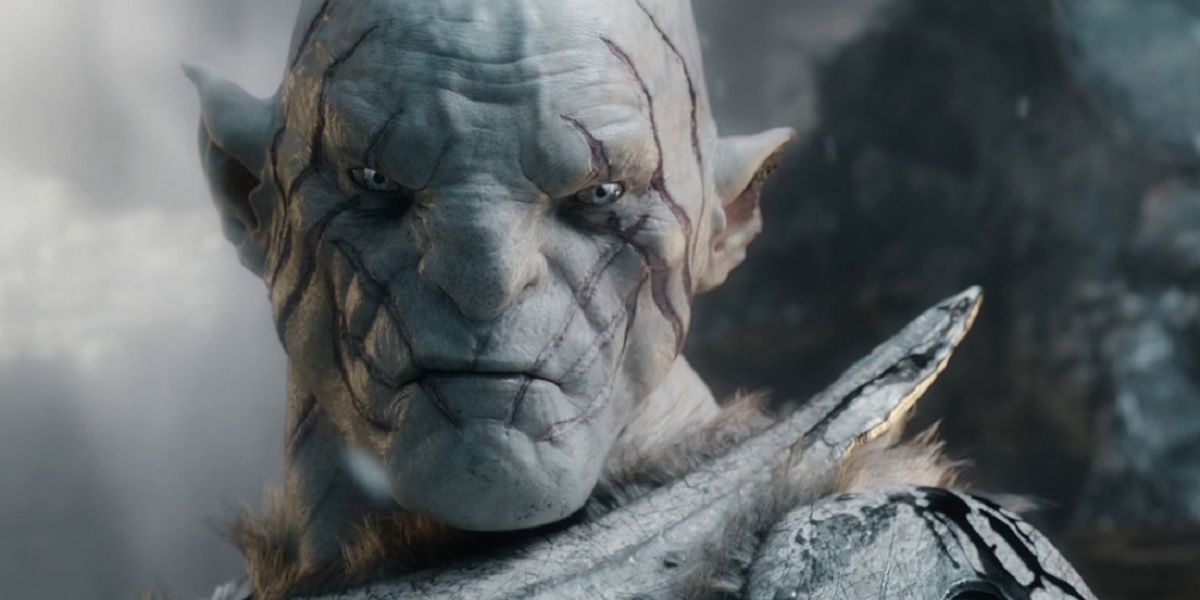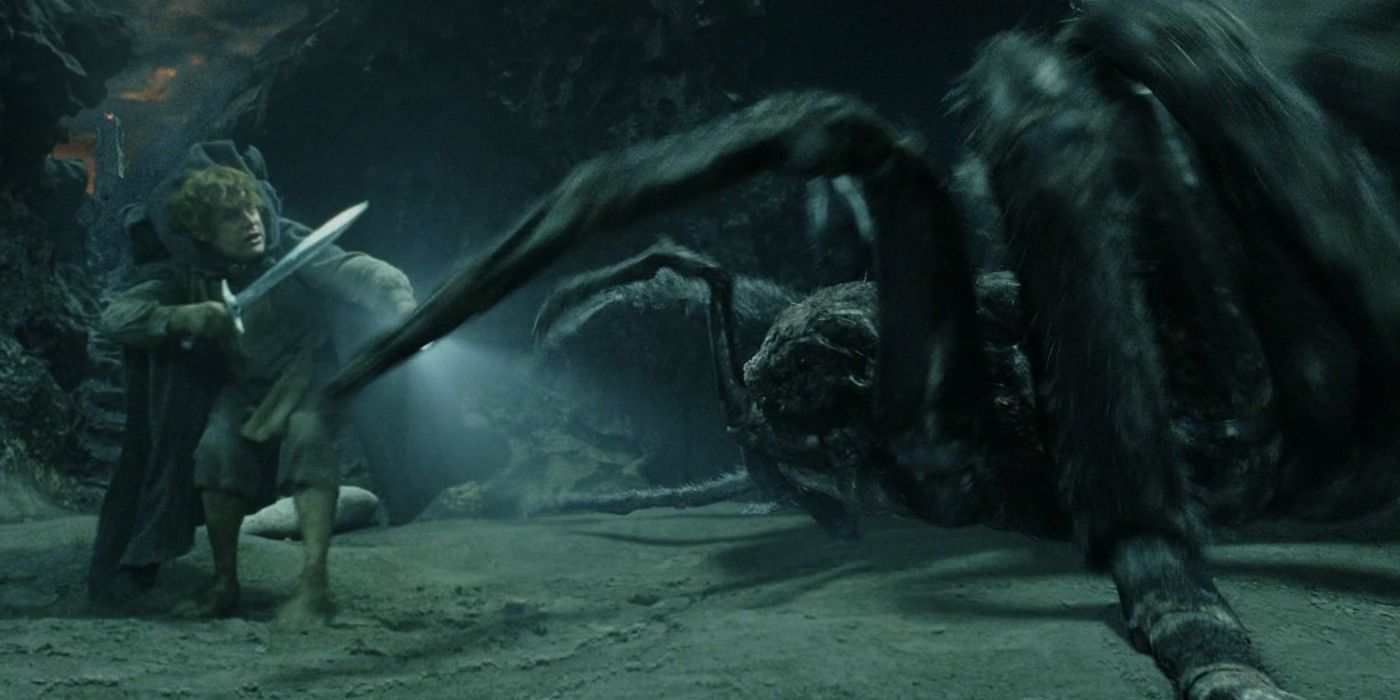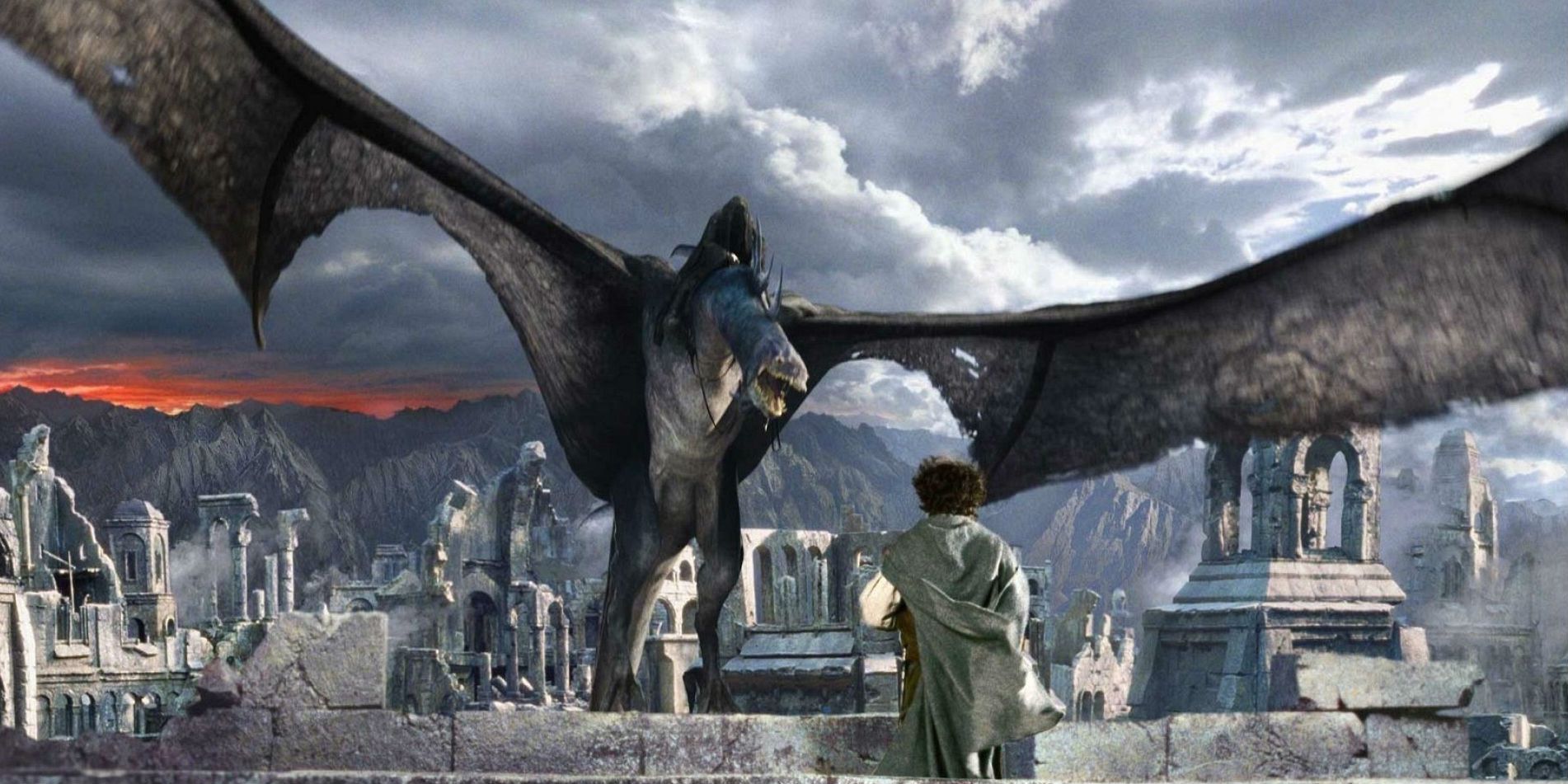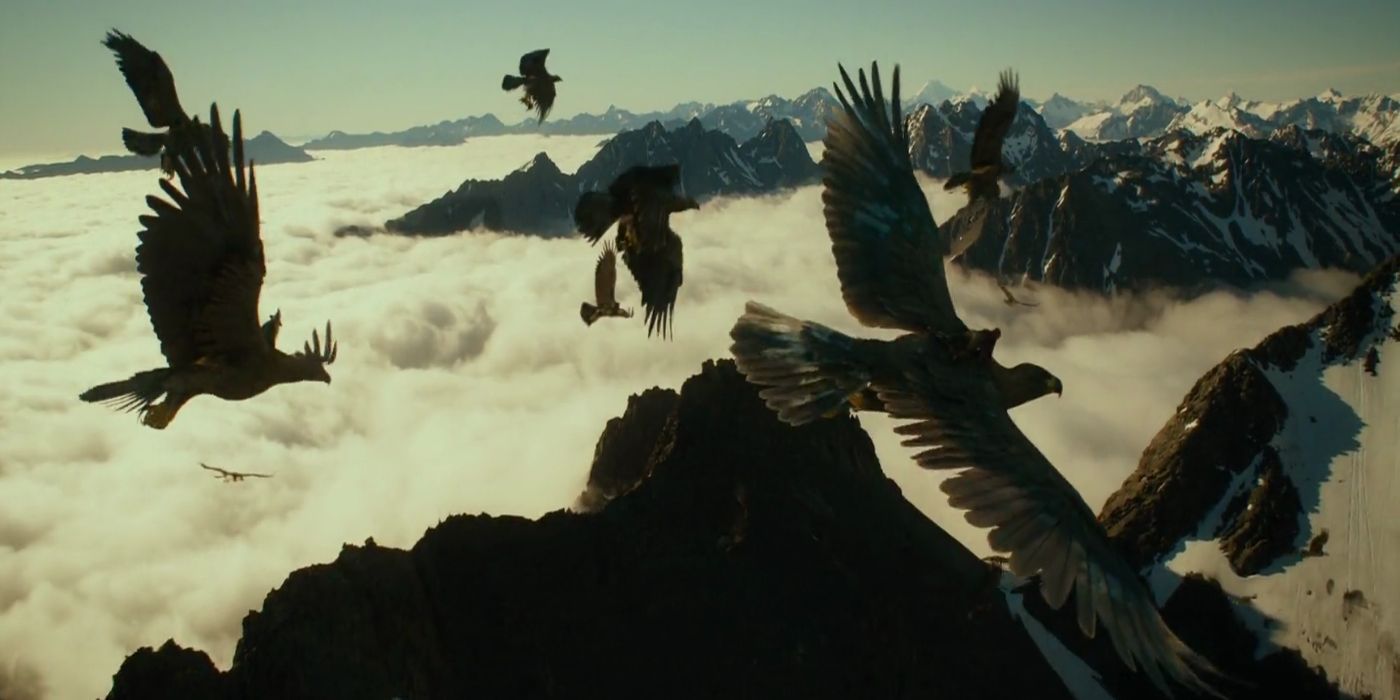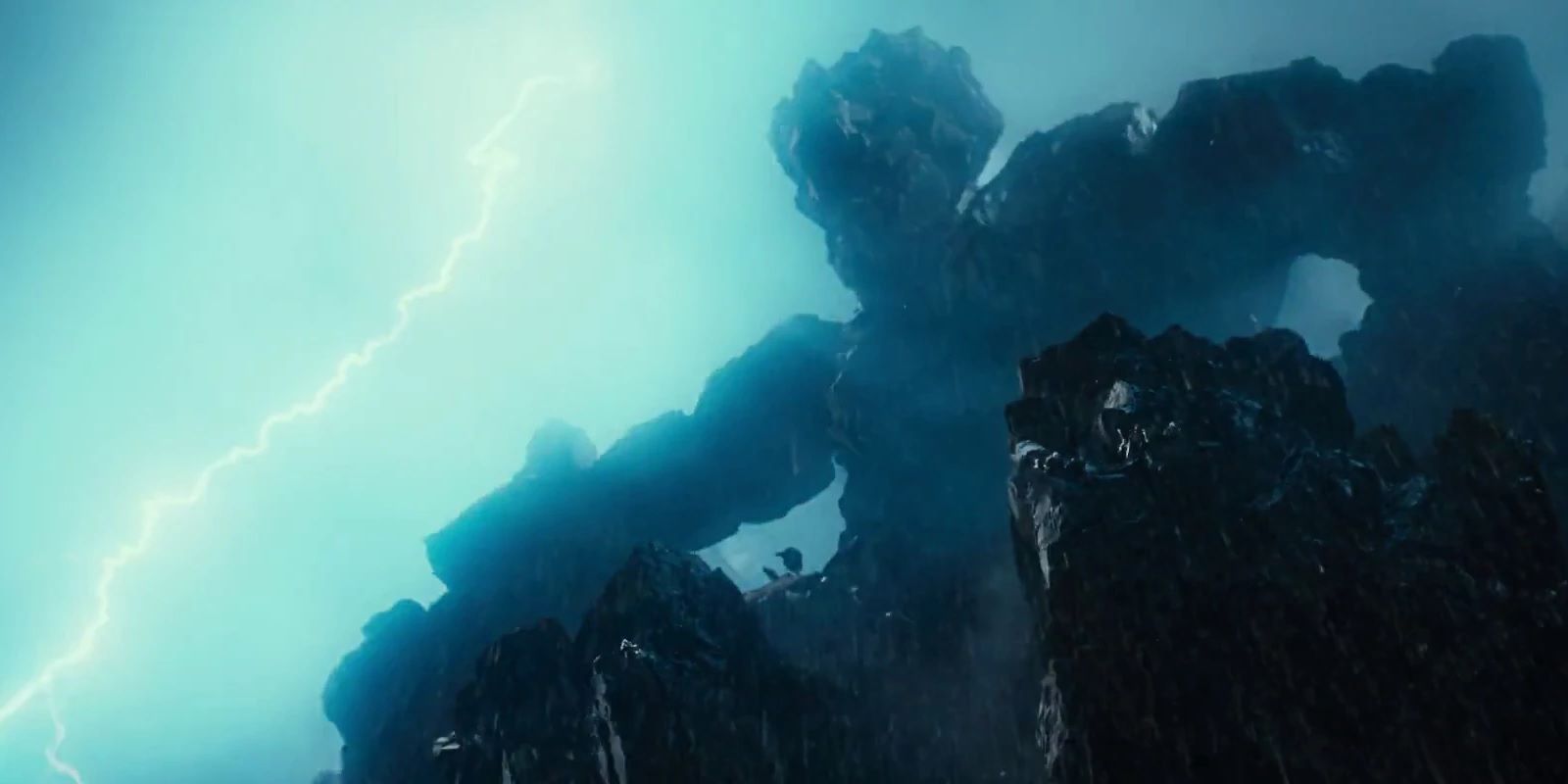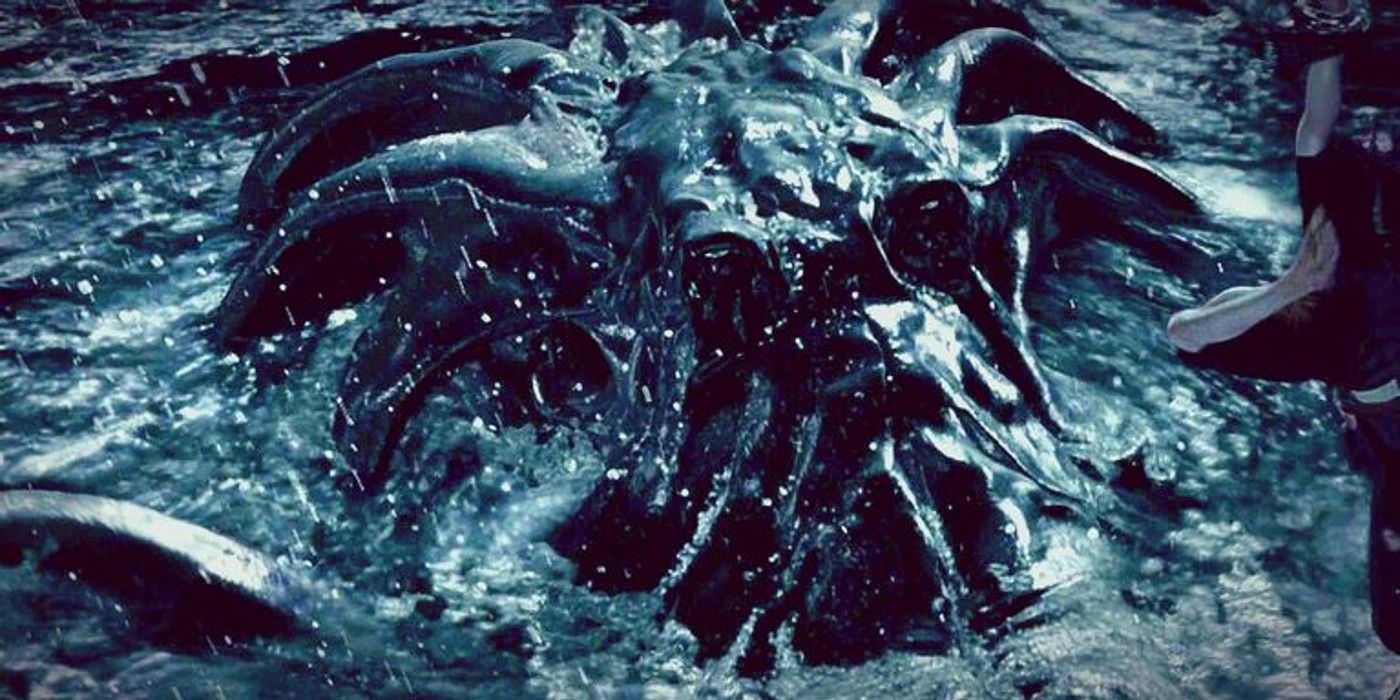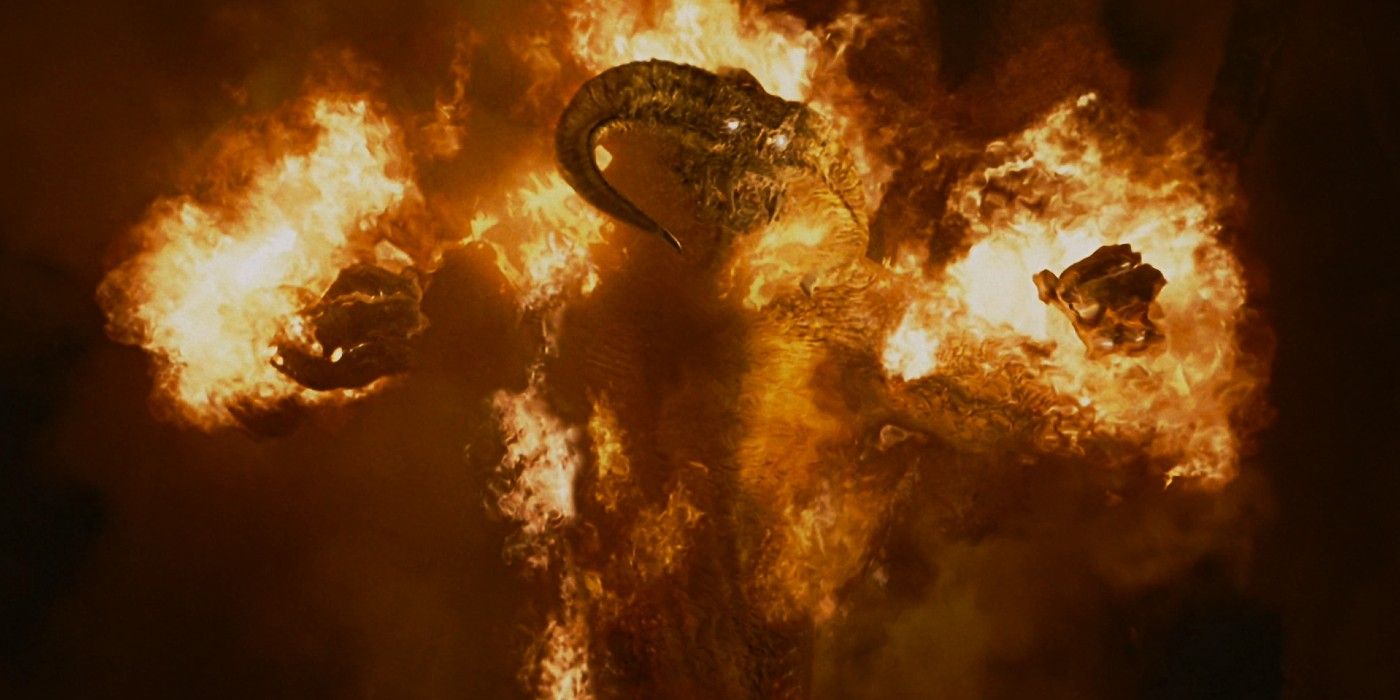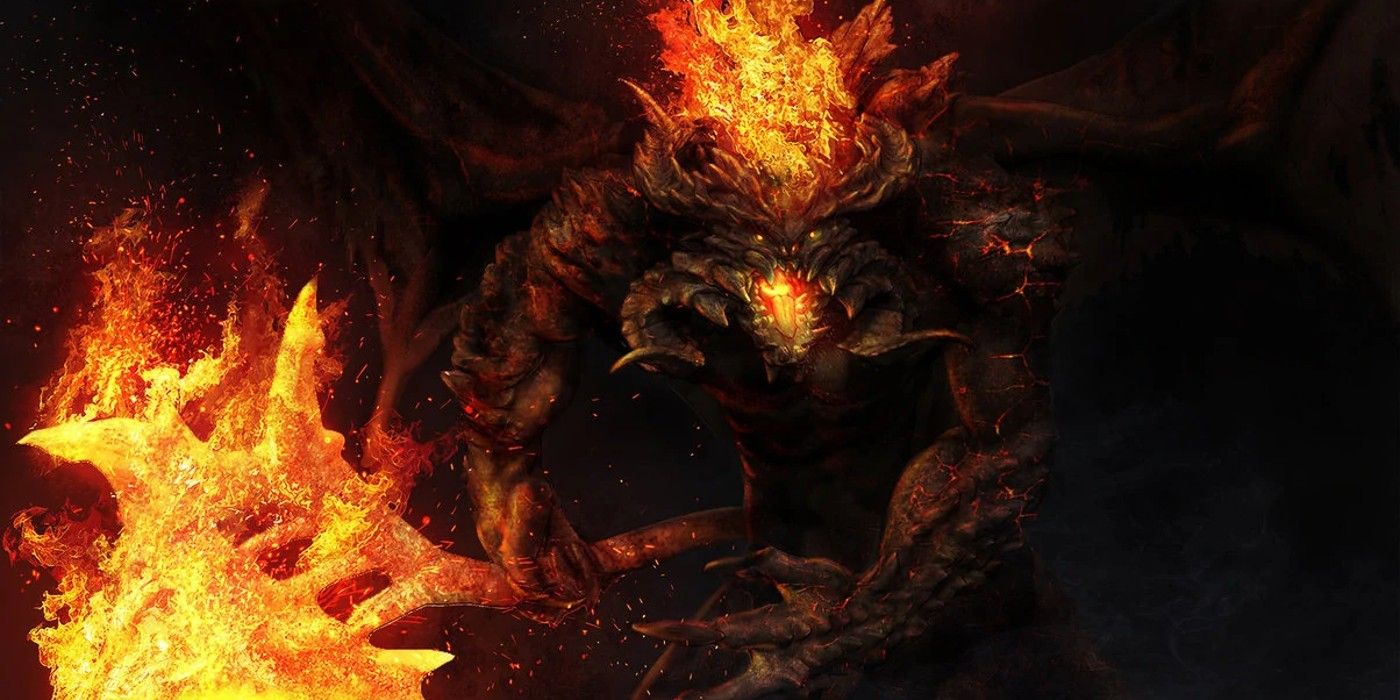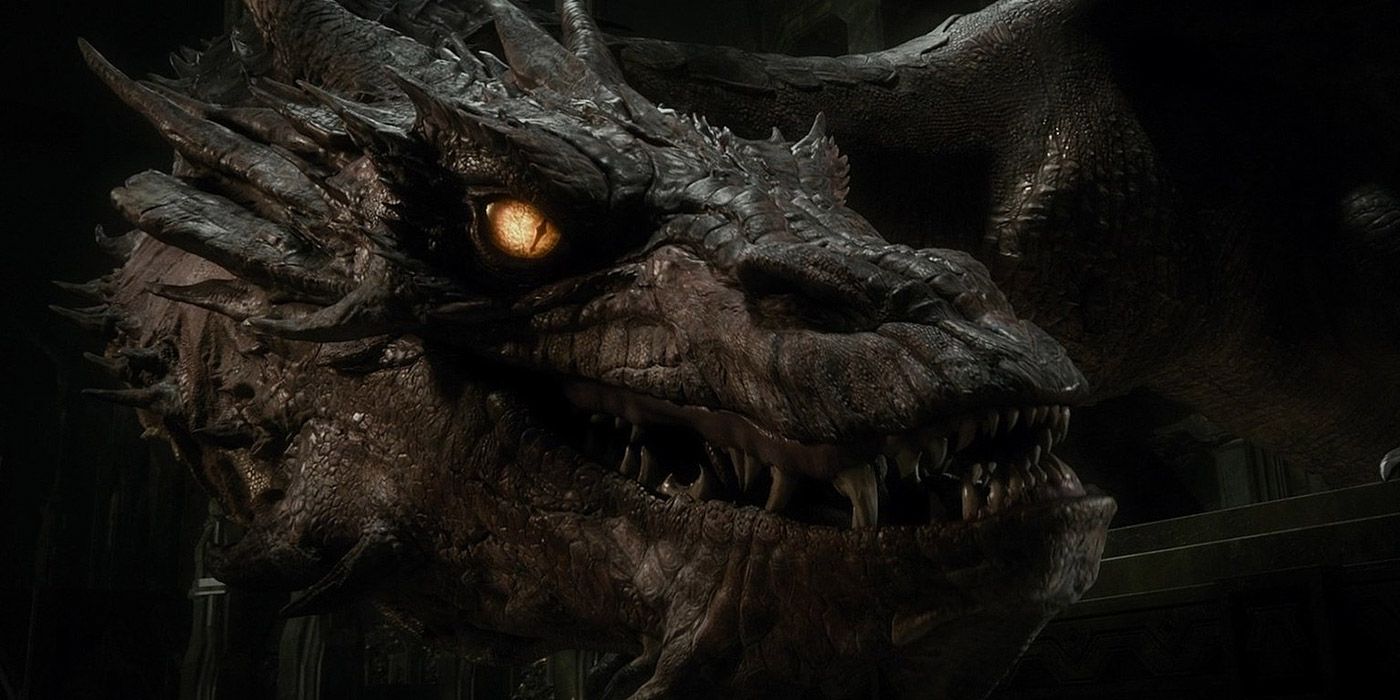J.R.R Tolkien was responsible for crafting one of the most epic and intricate universes full of fantastical Lord Of The Rings creatures. While the world might be more familiar with the movie trilogies and the Rings of Power Amazon Prime series, they are just the tip of the iceberg. A century’s worth of history took place by the time the movies arrived, and the prequel series only covers part of that history. The beasts and monsters fans encountered during the Third Age are pretty fantastical, but if fans journey back to the Second and First Ages they will find even stronger creatures capable of ransacking cities and terrorizing entire armies.
Middle-earth is populated by a lot of the same animals that exist in the real world, but Tolkien borrowed a lot of classic critters from folklore like dragons and werewolves, and even invented a lot of his own. The definition of “creature” can be pretty broad, and in The Lord of the Rings world, it could include everything save for most human races: Men, Elves, Dwarves, and Hobbits. And, as some creatures are exceptionally powerful for their species, there is a strong mixture of collective and individual entries.
24 Shadowfax
The Lord Of All Horses
While not the most powerful Lord of the Rings creature, Shadowfax is easily the most majestic. Gandalf refers to Shadowfax in The Two Towers as the “Lord of all horses,” and that’s not just the wizard waxing lyrical about his favorite steed. Shadowfax is a direct descendant of Felaróf, the greatest horse to ever step hoof in Middle-earth. Both are members of the Mearas, a type of horse that is far superior to the steed.
Shadowfax is incredibly brave, loyal, and smart, sticking by Gandalf even when charging into one of the greatest of battles and capable of understanding his every command. His finest attribute, however, is his speed. He’s described as being “faster than the wind,” which was proven when he carried Gandalf between The Shire and Rohan in under a week, one of The Lord of the Rings most amazing animal characters.
23 Wargs
The Bestial Steeds Of The Orcs
Wargs may not be the most powerful Lord of the Rings creatures, but there’s no denying there would be few sights more terrifying for a footsoldier of Gondor or Rohan than seeing a horde of orcs mounted on the snarling beasts charging towards them. In Tolkien’s mythology, wargs can be marked out from a normal wolf by their size and relative intelligence. The Lord of the Rings monsters are capable of allying themselves to another species — usually Goblins — and can be ridden like horses.
Wargs are also capable of carrying out purposeful attacks on their own, rather than just hunting for food. In The Fellowship of the Ring, they did just this to the Fellowship outside of Moria after becoming agents of Mordor. Viewers also saw wargs used by Azog and his Orc troops towards the climax of The Hobbit: An Unexpected Journey, nearly sending Gandalf and the rest of the company tumbling over a cliff as they took refuge up a tree, and almost knocking the life right out of Thorin.
22 Goblins
The Diminutive Cousins Of The Orcs
Though Tolkien had a confusing habit of using “orc” and “goblin” interchangeably, fans view them as two related but separate species, and Jackson depicted them as such in his films. While similar in shape and monstrosity, goblins tend to be smaller, sharper, and more technologically savvy than their stronger orcish cousins. In fact, in Over Hill and Under Hill, Tolkien wrote,
”
it is not unlikely that they invented some of the machines that have since troubled the world […] for wheels and engines and explosives always delighted them.
“
In terms of physical might, the Great Goblin who traps Thorin and company in The Hobbit in his goblin-town stronghold is probably the peak of the species. A key difference between orcs and goblins in The Lord of the Rings is that goblins tend to live underground. This is likely why Peter Jackson ensured the goblins faced by the Fellowship in the Mines of Moria had a notably different look to the orcs in the movie, despite none of the characters stopping to give an explanation for this.
21 Uruk-Hai
Saruman’s Elite Breed Of Orcs
The only Lord of the Rings creatures whose origins are shown in the movie are the Urak-hai, the elite and ferocious variety of orc created by Saruman after he pledges his fealty to Sauron. The Uruk-hai are a superior Orc species bred specifically for war. In The Lord of the Rings, Saruman cooks up an army of them in Isengard and sends them after the Fellowship.
Two of them play key roles in the story: Ugluk, who captures Merry and Pippin, and — in Jackson’s films — Lurtz, who cuts down Boromir. As a hybrid of Man and Orc, they have the combat and strategic skills of the former and the raw strength of the latter. One particularly barbaric tradition left over from their orcish half is to fill their helmets with the blood of their enemies. The smell of it running down their bodies makes them wildly thirsty for more.
20 Ogres
The Mysterious Lumbering Brutes Mentioned Only Once By Tolkien
There are many more Lord of the Rings creatures in the history of Middle-earth than are seen in the movies, or even Tolkien’s own writings, and ogres are a perfect example of a real-world fantasy creature that also exists in the world of LotR, but are rarely actually seen. As ogres are only mentioned in passing during Bilbo and Gollum’s riddle game in The Hobbit, they might be creatures of mere myth in Tolkien’s Middle-earth. It’s also entirely possible ogre was a term synonymous with troll as far as the citizens of Middle-earth are concerned.
However, ogres made a very real appearance in Peter Jackson’s The Battle of Five Armies as highly effective foot soldiers and leaders in Azog’s army. Ogres can be differentiated from trolls, which they could be easily mistaken for, by their smaller stature and lack of weakness to sunlight. In The Lord of the Rings films, viewers see Orcs using trolls as battering rams and transport, whereas Azog entrusts his ogre allies with important missions, which they carry out to deadly effect.
19 Trolls
The Feared Juggernauts With A Taste For Flesh
“They have a cave troll” is one of Boromir’s most memorable quotes from The Fellowship of the Ring, and it’s easy to see why the champion of Gondor would fear these Lord of the Rings creatures. Trolls are much larger and older than their ogre brethren, the biggest reaching up to 50ft. They’re also artificial beings, created by Melkor (Sauron’s master) for his War of the Wrath during the First Age.
Their weakness to the sun’s rays, which turns them into stone, is echoed in their rock-like hides, shielding them from physical harm. The cockney-voiced trio that nearly devours Bilbo and the dwarves in The Hobbit might give fans the impression that trolls aren’t up to much, but the ones that survived into the Third Age and joined forces with Sauron were considered massive threats. What they lack in brain power, they make up for in sheer size and muscle.
18 Olog-Hai
An Even Deadlier Breed Of Troll
Much like the orcs, the combined intellects of Sauron and Saruman also sought to improve trolls through the Middle-earth equivalent of genetic engineering. That’s basically what an Olog-hai is, an improvement on the original Lord of the Rings creature seen in The Return of the King, superior because it can fight in the sunlight without turning to stone. Trolls are already frightening forces to face down on the battlefield if there is a smaller, squishier creature, but at least their older enemies knew they were only active at night.
Olog-hai are also a little brighter than other trolls — though that’s not really saying much. Like Uruk-hai, they were purpose-bred to fight in Sauron’s armies during the Third Age. Some have mouths full of sharpened teeth while others have large tusks. They range from 15 to 30 feet and, unlike most trolls, wear full battle armor and can skillfully wield weapons.
17 Carcharoth
The Werewolf Pet Of Morgoth
There were many Lord of the Rings creatures that didn’t appear in Peter Jackson’s movies, and one of the most prominent (and deadly) examples is the Carcharoth — the pet of the first evil of Middle-earth, Morgoth. Carcharoth is a werewolf who lived in the First Age and is a direct descendant of Draugluin, the first of their breed. Draugluin was created by Morgoth (who was also known as Melkor) by infusing a wolf with an evil spirit.
Morgoth raised Carcharoth on a diet of magically enhanced “living flesh.” This resulted in the beast growing to an enormous size with a hunger to match. His eyes were said to glow like “coals,” his fur was striped scarlet and his teeth were tipped with poison, earning him names like Red Maw and the Jaws of Thirst. He famously bit the hand and wrist clean off Beren Erchamion (Aragorn’s distant ancestor).
16 Ents
The Kind-Yet-Dangerous Stewards Of The Forest
The most beloved Lord of the Rings creatures as far as many fans are concerned are the Ents, the walking trees who act as guardians for Mirkwood and the other numerous forests of Middle-earth. Indistinguishable from trees when sleeping, Ents are sentient tree-like creatures tasked with tending and protecting forests, and this means they align themselves agains anyone who threatens the balance of nature, rather than necessarily being good or evil.
Each Ent tends to closely resemble the type of tree that they’re in charge of, meaning there’s a lot of variation in their appearance. Treebeard, who Merry and Pippin encounter in Fangorn Forest, is the oldest surviving member of their kind. Though they’re famously slow-moving, Ents are incredibly strong and resilient, as Merry and Pippin say: “Their punches can crumple iron like tinfoil, and they can tear apart solid rock like bread crusts.” The two hobbits help galvanize the Ents to destroy Saruman’s Isengard stronghold to avenge his assault on their forest, leading to the wizard’s demise.
15 Mumakil
Tolkien’s Take On War Elephants
Also known as Olephants, Mûmakils are Tolkien’s spin on elephants. Mûmakils are an incredibly deadly Lord of the Rings creature, though this is mostly because of how they’re utilized on the field of battle rather than their being anything inherently evil or violent in their nature. They were exclusively used by the Haradrim, a race of Men who lived in the Southern region of Middle-earth and became indoctrinated by Sauron to serve as his human allies in the War of the Ring.
During the Battle of the Pelennor Fields, 18,000 Haradrim faced down King Theoden’s forces, and among them were at least dozens of Mûmakils strapped with vast saddles that allowed groups of Haradrim arches to rain down arrows from above. At up to 90 feet tall, the Mûmakil struck devastating blows on the battlefield, acting like the animal equivalent to tanks. With their naturally armored skin, they’re very hard to even scratch, while anything smaller than them caught in their path will either get squashed or swiped away by a trunk or one of their four, long tusks.
14 Were-Worms
The Scourge Of The Deserts Of Middle-earth
Bearing a similarity to the Shai-Hulud in Dune, were-worms are giant worms that swim through sand and dirt like it was water. Like ogres, Were-worms’ actual existence in Tolkien’s writing was questionable. Hobbits believed these Lord of the Rings creatures lived in deserts to the far East of the Shire, but they could have mixed them up with dragons — who resembled long, wingless lizards to begin with. However, despite were-worms not directly appearing in any of Tolkien’s works, Peter Jackson decided to include them in The Battle of Five Armies.
Azog the Defiler used were-worms to create an underground passage for part of his army between Mount Gundabad and Erebor. Here, Jackson envisioned them to be about 400 feet long and 75 feet wide with huge, earth-crushing mouths. Luckily for the horrified Dwarves, Elves, and Men at Erebor’s gate, they weren’t keen on leaving their tunnels.
13 Azog The Defiler
The Greatest Orc Who Ever Lived
There aren’t many Lord of the Rings creatures mentioned by name, especially among the hordes of orcs, goblins, trolls, and other beasts that make up the armies of Sauron and Saruman. A notable exception, however, is the orc champion known as Azog the Defiler. While he’s not a Uruk-hai, Azog the Defiler was probably the greatest orc to ever set foot in Middle-earth.
Azog got his title by beheading the Dwarven King Thrór, Thorin’s grandfather, beginning a bitter war between the two species. Thorin avenged his family by taking one of the orc’s arms. In Peter Jackson’s Hobbit trilogy, Azog’s missing appendage was replaced by a metal spike, making his already scarred and muscular body more intimidating. Azog isn’t just strong but also cunning, preferring to corner and wear down his enemy so that he can strike at exactly the right moment.
12 Shelob
The Deadly Spider Who Almost Kills Frodo
Shelob left a lasting impression on fans of The Lord of the Rings as one of the film trilogy’s creepiest creatures. Shelob is, of course, the giant spider who poisons Frodo in The Lord of the Rings: Return of the King. Knowing how powerful she is, Gollum leads Sam and Frodo right into her lair in Mordor, having previously had his life spared by Shelob on the promise of satiating her with juicier meat. Despite her size, audiences see her stalk the unfortunate Frodo in total silence before paralyzing the Hobbit with her stinger and wrapping him up in webbing for later.
Though she was considered a pet by Sauron, Shelob was neutral to any side but her own unending hunger and feared by every creature that knew what she was capable of. The movies didn’t fully touch on Shelob’s power, either, as she was far from simply a giant spider. Shelob had existed on Middle-earth for thousands of years, possibly since even before the First Age. She was also a central character in the Lord of the Rings game Middle-earth: Shadow of War, which showcased her many abilities, such as being able to take a more human-like form.
11 Fellbeasts
The Terrifying Steeds Of The Ring Wraiths
Prior to the appearance of Smaug in The Hobbit trilogy, the Fellbeasts the Nazgȗl ride were the closest Lord of the Rings creatures to dragons to appear in the movies. With their ear-splitting shrieks, it’s more likely to hear a Fellbeast before anyone sees one. These black, winged monsters are the chosen flying steed of the Nazgȗl, or Ring Wraiths, Sauron’s formerly mortal servants who were corrupted by the Rings of Power and transformed into malevolent, ghostly entities.
Fellbeasts are incredibly agile and powerful hunters. They like to swoop down and bite their prey if they’re targeting a group or, for individuals, grab and lift them up into the air so that they can drop them to their doom. The only thing they seem to fear is direct sunlight, as demonstrated when Gandalf warded them off in The Return of the King.
10 Great Eagles
There aren’t many Lord of the Rings creatures who actively align themselves against Sauron, though a notable exception are the Great Eagles, the majestic winged creatures who save Gandalf from Isengard and ensure Frodo and Sam make it back from Mount Doom alive. The Great Eagles are the side of good’s best defense against the likes of flying terrors like Fellbeasts and dragons. Though they may not look as ferocious, Tolkien stated they were definitely the fastest.
Their king, Thorondor, was the largest, with a wingspan of 180 feet. He did battle with the largest dragon ever to exist in Middle-earth, while his son, Gwaihir, played an instrumental role in the War of the Ring. Gwaihir is the leader of the eagles that rescue Gandalf after his tussles with Saruman and the Balrog, as well as Frodo and Sam after they bring the one ring to Mount Doom.
9 Giants
The Thunderous Terrors Of The Misty Mountains
Like ogres, giants weren’t actually mentioned much by J.R.R Tolkien, though they are likely one of the most formidable Lord of the Rings creatures, and it’s lucky for Aragorn, Frodo, and the Fellowship that they didn’t align themselves with Mordor during the War of the Ring. Surprisingly, despite their gigantic size, giants are rarely seen in Middle-earth. In fact, Tolkien’s mentions of them in the Red Book of Westmarch and The Hobbit were his only references to them.
As seen in Peter Jackson’s An Unexpected Journey, Frodo, Gandalf, and the dwarves pass through what they think is a thunderstorm in the mountains during the events of The Hobbit. Looking up, they realize the cacophony of sound is actually a pair of giants tossing rocks at each other for fun. In Jackson’s version, these giants look like they could easily be mistaken for actual mountains because of their towering stature and rocky forms. It’s just as well they seem to care little for the affairs of the smaller people who live below them.
8 Watcher In The Water
The Mysterious Guardian Of Moria
While this Lord of the Rings creature had an incredibly memorable scene in Peter Jackson’s The Fellowship of the Ring, there’s surprisingly little revealed by Tolkien about its origins and nature. The Watcher In The Water might be Tolkien’s most mysterious monster, and it doesn’t even have a proper creature name. Clearly, its inspiration was the Kraken, as it’s described in The Fellowship of the Ring as having 21 tentacles, which emerge from the lake in front of the gate to the Mines of Moria.
After it snatches up Frodo, all the rest of the Fellowship can do is force it to release the ring-bearer, before rushing inside the magically sealed gate to hide from it. The only information anyone gets about its origin is when Gandalf describes it as being “older” and “fouler” than orcs. Given its proximity, it could be another ancient evil disturbed by the dwarves in Moria.
7 Durin’s Bane
The Balrog That Fells Gandalf The Grey
The Balrog was one of the most fearsome Lord of the Rings creatures in Peter Jackson’s The Fellowship of the Ring — and despite how fearsome the on-screen version was, the films still didn’t manage to do the true power of the beast of shadow and flame justice. In The Lord of the Rings, the Fellowship found themselves surrounded by a goblin horde deep in the Mines of Moria, but just as they readied themselves to fight for their lives, a much bigger and older threat erupted from the deep.
Named Durin’s Bane because of its slaying of the great Dwarven king, this Balrog is one of the last of its kind by the Third Age. Balrogs and wizards share a common ancestry. Both are angelic entities called Maiar, but Balrogs were corrupted by Melkor to become the demonic, fiery beasts like the one that Gandalf spends days battling; an intense encounter that results in the destruction of both of their physical forms.
6 Gothmog
The Greatest Balrog In The History Of Middle-earth
While Durin’s Bane from The Lord of the Rings: The Fellowship of the Ring was among the most powerful creatures seen on-screen, he amazingly wasn’t the most powerful Balrog who ever lived (even if he was the last surviving one by the end of the Third Age). The most powerful Balrog was Gothmog, who predated the fight between Gandalf and Durin’s Bane by several thousand years.
Gothmog, whose name means “strife and hate” was Lord of all Balrogs in the First Age. His official status in Morgoth’s army as the High Captain of Angbard meant he was also on equal footing with Sauron, Morgoth’s successor. Like Durin’s Bane, Gothmog gained a reputation as a king-slayer, claiming the lives of two High Kings of the Ñoldor Elves. As well as a whip, he wielded a huge, black axe. Gothmog and the other Balrogs eventually broke free from servitude to claim Angbard as their own where he remained the greatest of his kind to ever walk Middle-earth.
5 Smaug
The Deadly Dragon Of The Misty Mountains
One of the most widely known Lord of the Rings creatures is inarguably the dragon Smaug, who became a staple of Peter Jackson’s adaptations following his prominence in The Hobbit movies. As far as dragons in Tolkien’s work goes, Smaug has the most name recognition, as few others directly feature in any of the events covered by the novels set in Middle-earth (but as a race, dragons are mentioned extensively in the author’s notes and appendices).
By the Third Age, Smaug was the last of the “great” dragons left. Dragons worship wealth, so his focus was on Dwarven King Thror’s huge pile of treasure in the Lonely Mountain. It’s clear in The Hobbit that Gandalf is concerned about what a tremendous ally Smaug would make to Sauron, and he’s right. Though not the largest of his kind, Smaug is still one of the largest, fastest, and smartest beasts in Middle-earth — not to mention one of the most devious. Had there not already been a chink in his armor, he might have been impossible to take down.



